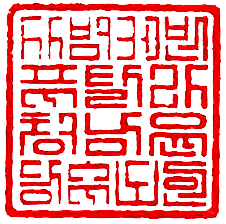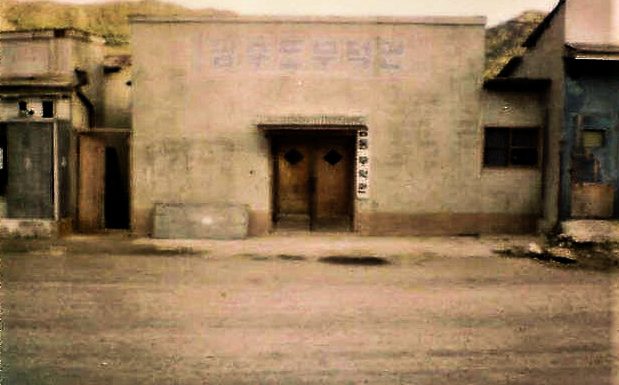When I began training under Master Yun it was old school training in an old school dojang, and I loved it. I have trained and taught in the old school ways ever since, and I have never forgotten my time in that dojang and the lessons learned there.
The account below is from the time I trained with Master Yun in 1985 and 1986. Senior students who came before me and who have I have been in touch with in recent years have had pretty different experiences their time training under Master Yun.
The Dojang
First, let’s talk about the dojang itself. You can see the outside in the photo to the right, which is the front entrance. To the far left is an open door which leads to an alley that goes to Master Yun’s home.
The window to the right was Master Yun’s office. The dojang was open for students to use 24 hours a day, 7 days a week.
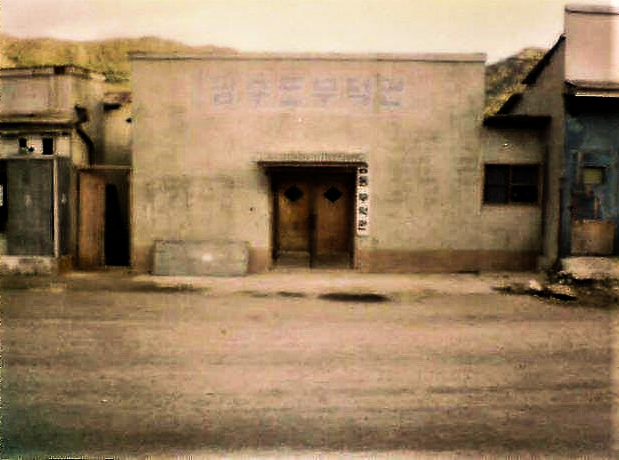
Classes
Classes were Monday through Friday, usually from 7PM to 9PM, but at times they went until 10PM. It was a cement building with old wooden floors, worn smooth and shiny from years of students gliding back and forth across it.
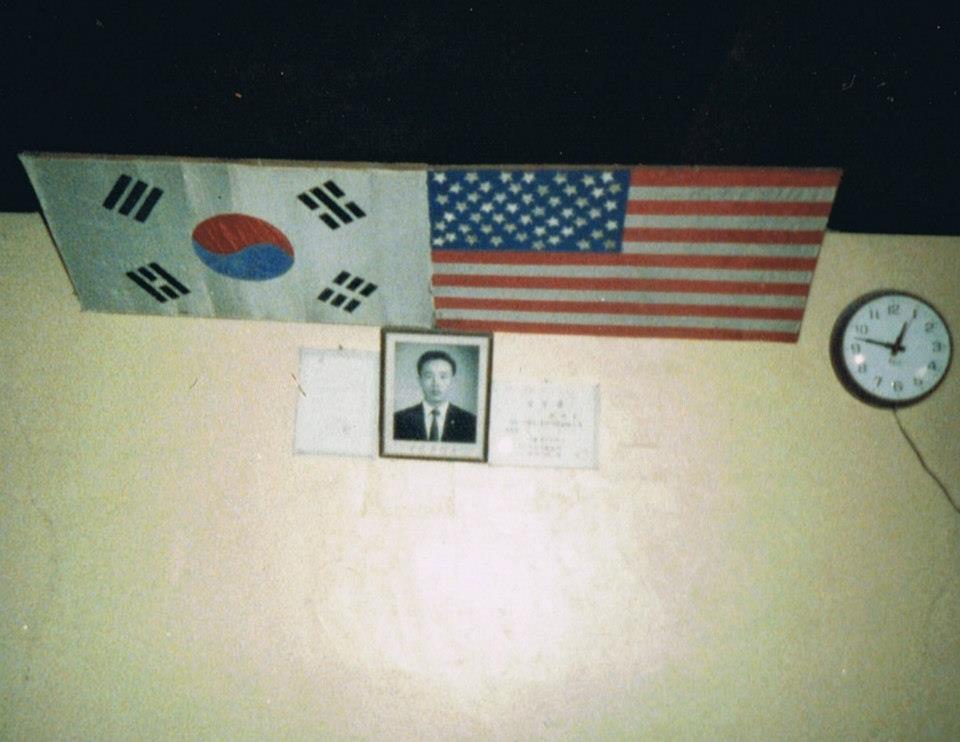
The front of the dojang bore the Korean and American flags and a photo of Master Yun. I can’t recall what the two certificates on either side of his photo were and can’t make them out in the photo.
At the top of the wall around the room were photos of all of Master Yun’s black belt students, most of whom were American servicemen.
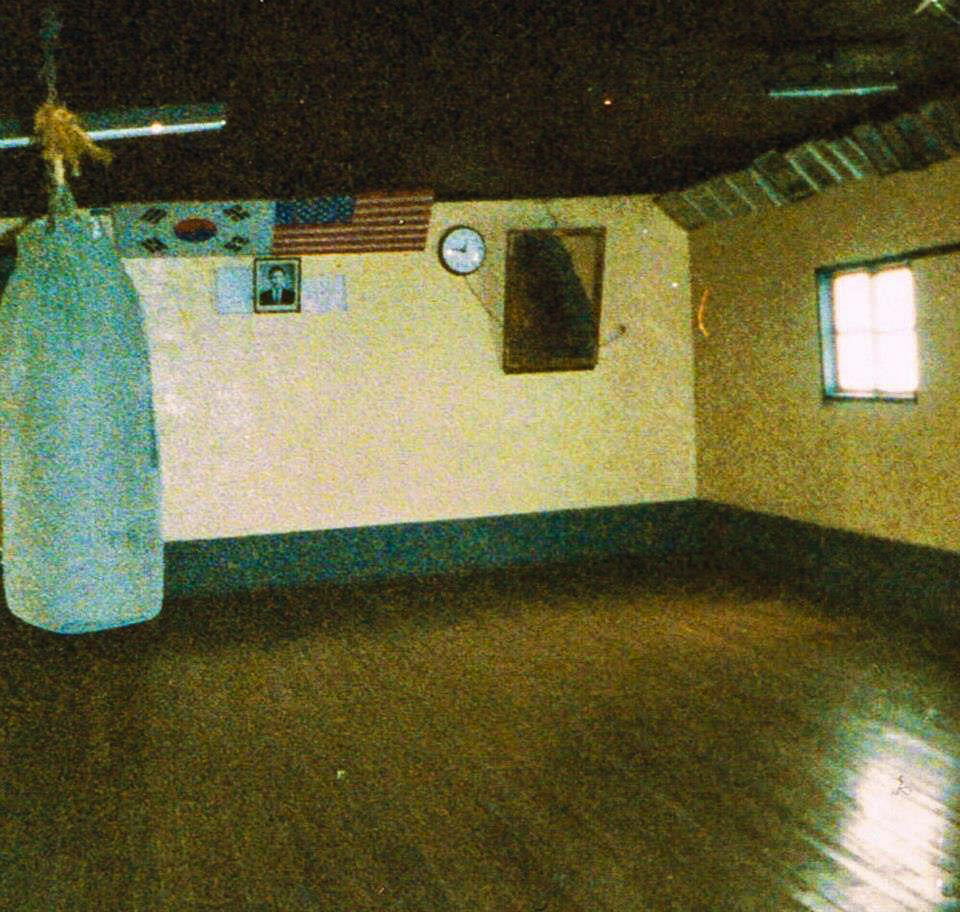
In a few spots on the floor there were pieces of the boards missing and the edges were worn sharp. On more than one occasion I would be doing hyung or basics, and my foot would feel sticky. I looked down and I had sliced my foot on the one of those spots, leaving blood on the floor.
I would clean it up, clean the cut, tape it up, and continue.
This was 1985, and there was no air conditioning in the summer. The summers in Korea were hot and very humid, and every class we would be soaked with sweat by the end. During the bitter cold winters there was only a small wood burning stove, which was located at the back edge of the training floor.
If you weren’t aware of your surroundings you would bump into it and burn your leg or butt. It was like having an extra opponent on the floor that you needed to keep an eye on.
Class Layout
Each and every class followed the same layout and order of training.
- Bow In
- Meditation
- Warmups/stretching
- The List of Basics
- Technique or focus of the day
- Hyung
- One Step Sparring/Self-defense
- Sparring
- Hand Conditioning
- Bow Out
Language Used
Today, most schools use the language of an art’s origin to describe the techniques, forms, and count reps. Oddly enough, Master Yun taught Americans in English, and never used Korean terminology in class. Even the list of basics were in English and those are the terms he went by. It definitely made things easier for American students.
Master Yun would also work with the ROK Army Korean soldiers. In those classes he spoke Korean, of course. He would allow the Korean soldiers to use the dojang for martial arts training from time to time. I still use the same terms today that Master Yun used then.
The Basics
One thing that was NEVER missed was going through the entire list of basics at the start of each and every class. The photo at right is a picture of framed list that hung on the dojang wall.
This is the exact order they were practiced in, and each technique was done while walking up and down the floor.
These are the building blocks and foundation of Tang Soo Do and Karate in general. A solid understanding and mastery of these techniques builds a solid foundation in the art on which you can learn and build more advanced techniques.
If a student does not master these basics, they will not be able to master the more advanced techniques and do them properly.
I still practice these basics at the start of my personal training, and have a recent version of the list hanging in my garage (below).
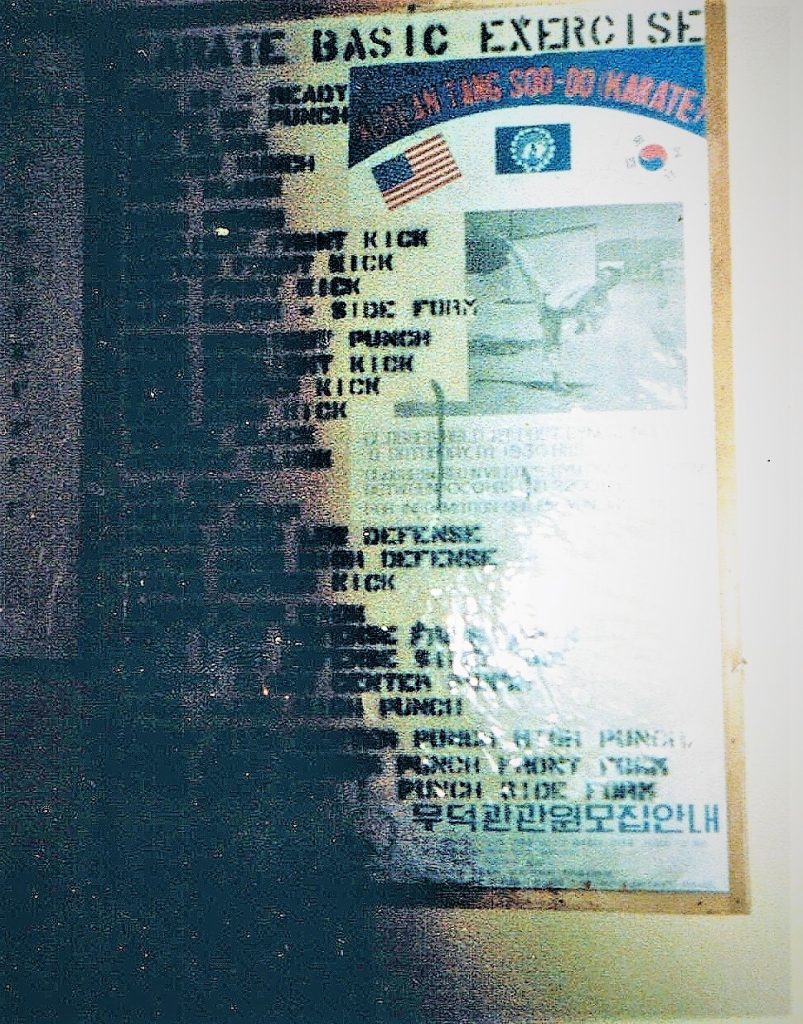
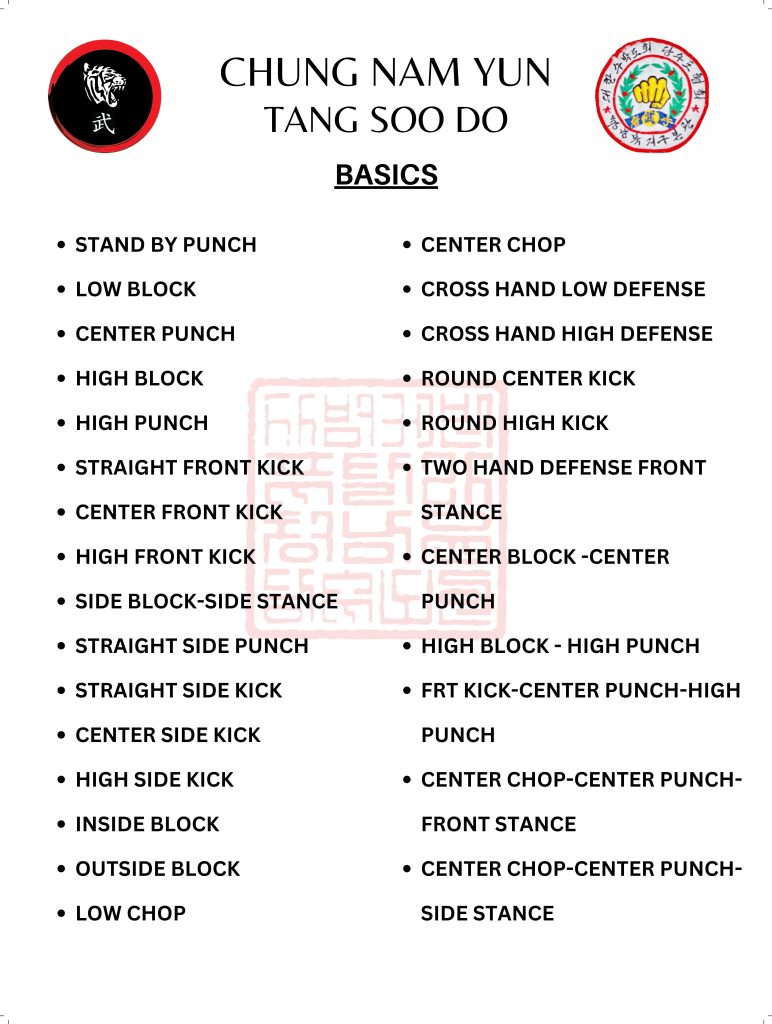
Meditation
Just a short word about meditation, so that others don’t misunderstand. I am a Christian, a Believer and follower of Jesus Christ as my Lord and Savior, but I am NOT religious. I have run a successful martial arts ministry and used the martial arts to lead others to know Christ, but I have also had “Christians” tell me that I will burn in Hell for training martial arts, meditating, and practicing Eastern practices.
Let’s get one thing straight….martial arts did not come from any religious practice, it is not a religious practice, and is not based on any religious practice. They are forms of fighting, combat, warriorship, etc.
The meditation referred to above in the class layout was students sitting in the seiza or cross legged position, back straight, head up, and eyes closed. Breathing deeply, in through the nose, out through the mouth, bringing the air deep into the abdomen, and letting it out slowly.
While doing this, the student forgot about everything that happened prior to walking into the dojang. We let go of all of the BS at work, the fact that we were thousands of miles away from our loved ones, everything, and cleared our minds so we can focus solely on the training ahead.
That’s it.
No chanting, no incense, no Buddha statues, drums, or tambourines. Just proper breathing and clearing our minds for no more than 5 minutes. Then the fun began.
Hand Conditioning

At the end of every class, we would line up according to belt rank and extend one punch outward. Master Yun had a wooden block about 2-3″ square and approximately 8-9 inches long. (See photo at left)
There were two slits cut lengthwise into the block, making it three panels that had some flex to them.
We would all be standing in a horse stance with our punches extended, and Master Yun would walk up to each of us one by one, grab our wrist, and strike the first two knuckles of our punching fist with the block.
He would strike it about 10 times, then call for the other hand to punch, and repeat the process. He would continue to each and every student, both hands, and then bow out of class. Being that we trained for self-defense, was the priority aside from improving yourself.
There were also two wooden posts to the left, when you first entered the dojang, that were used as a makiwara, or striking post. During the times I trained on my own on weekends and off days, Master Yun would have me strike the posts as a warmup or at the end of training. Hand conditioning wasn’t excessive, but it was part of the training to harden the bones of the hand, wrist, and arm.
Staying Old School
Although those days in Korea were tough, with plenty of blood, sweat, and even tears, I wouldn’t trade them for the world. Compared to the nice, padded floors, and central heat and air of today’s schools, Master Yun’s dojang was spartan at best.
The training was based on repetition, over and over, then testing out what you learned in “light” sparring. Secretly, I believe Master Yun liked watching us knock each other around, as he would always say “Light sparring” with a smile.
We sparred all out, yet careful not to injure each other intentionally, although we still received our bumps, bruises, and even stitches on occasion. We sweat our butts off in the summer and froze them off in the winter, but I wouldn’t trade a second of those days and would go back in a heartbeat if it was possible.
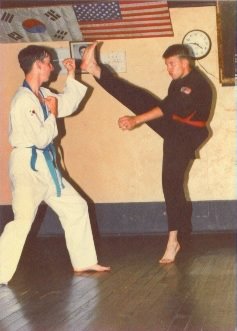
I continue to train on my own, but in the same way as back then, because for 40 years I have found that the old school is the best school.
